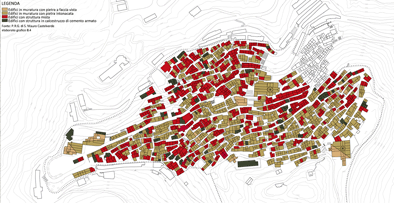Resilience in small urban centers with a strong historical connotation
DOI:
https://doi.org/10.6092/2281-4574/3731Keywords:
resilience, risks, seismic vulnerability, small urban centers, structural retrofitAbstract
If we consider resilience in a historical town according to its response to natural disasters and emergency cases, this capacity goes beyond all our expectations. It happens especially when the settlement principle of a historical center, occurred transformations caused by disasters, and redundancies increase the coping capacity and capacity of response of historic buildings amplifying their value.
However, in order to take abandoned or nearly uninhabited urban heritages back - a very common event in our territory - raising new qualities can be seen as a true need of retrofit, maintenance and management measures aiming at increasing safety and resilience or, in other words, improving livable spaces, paying a new and special interest towards those areas, and putting into effect a practical possibility to reuse and repopulate them.
This paper offers the first results of researches concerning small historical villages - interesting samples of a wide national heritage. The goal of this study is to explore some methodological aspects: we have started with a deep study of the urban tissue and historical buildings in each small center (analyzing both building functions and typologies, and the nature of built heritage in conformity with building typologies, vulnerability features, practical accessibility, and potential mobility); then, we have made a sensitivity analysis with previsions of critical contexts and, finally, we have defined prevention proposals and emergency and risk management plans identifying works for increasing performances (safety and mobility under stressing conditions) that are suitable and consistent with the existing heritage.
Downloads

Downloads
Published
Issue
Section
License
Gli autori che pubblicano su questa rivista accettano le seguenti condizioni:- Gli autori mantengono i diritti sulla loro opera e cedono alla rivista il diritto di prima pubblicazione dell'opera, contemporaneamente licenziata sotto una Licenza Creative Commons - Attribuzione che permette ad altri di condividere l'opera indicando la paternità intellettuale e la prima pubblicazione su questa rivista.
- Gli autori possono aderire ad altri accordi di licenza non esclusiva per la distribuzione della versione dell'opera pubblicata (es. depositarla in un archivio istituzionale o pubblicarla in una monografia), a patto di indicare che la prima pubblicazione è avvenuta su questa rivista.
- Gli autori possono diffondere la loro opera online (es. in repository istituzionali o nel loro sito web) prima e durante il processo di submission, poiché può portare a scambi produttivi e aumentare le citazioni dell'opera pubblicata (Vedi The Effect of Open Access).

